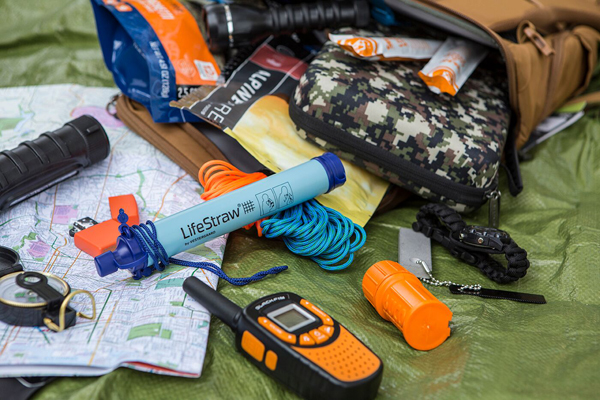- La Feria Community Holds Succesful Business Mixer Event
- Little Nashville to Take Place in Downtown Mercedes
- Lions Basketball Captures District Gold
- La Feria ISD Students Compete in Regional Chess Tournament
- Lions End First Half of 32-4A on a High Note
- La Feria ISD Held Another Successful Parent Conference
- Strong Appearance for Lions at Hidalgo Power Meet
- LFECHS Students Get to Meet Local Actress
- Students Participate in Marine Biology Camp
- Two LFECHS Students Qualify for All-State Band
Are You Prepared for the Next Natural Disaster?
- Updated: September 27, 2019
(StatePoint) The devastation of Hurricane Dorian has left an indelible mark and also served as a reminder of the importance of being prepared for the unexpected. Worldwide, 281 natural disasters impacted more than 60 million people in 2018, according to the Centre for Research on the Epidemiology of Disasters. As unexpected occurrences continue around the globe, it is important to plan how to keep your family healthy and safe in the event an emergency or national disaster strikes close to home.
September is National Preparedness Month, and given recent news headlines outlining the devastation left in the wake of natural disasters, now is the perfect time to make simple preparations to ensure your family has essentials on hand for an emergency. While many comprehensive resources exist to help you build an emergency kit, the first step is to start with the basics: water, food, light, communications and first aid.
An emergency preparation element often taken for granted is access to safe and potable drinking water. From earthquakes and hurricanes to floods and wildfires, natural disasters can contaminate and disrupt water supplies and systems.
“During disasters, water systems are often compromised, and it may take days or even weeks for proper testing to be done and for systems to be restored,” says Alison Hill, managing director of LifeStraw, a manufacturer of water filtration systems that has been on the ground in India, Indonesia, Myanmar, Mozambique, here in the US, and most recently the Bahamas, offering support to those affected by devastating natural disasters.
While most emergency preparation checklists include clean water, it can be difficult to plan for more than a few days’ supply. Emergency preparation tips suggest keeping a few gallons on hand (about a 3-day supply), however for longer-term protection and to eliminate the bulk and weight of carrying large quantities of water during an evacuation scenario, a personal filtration device stored within your at-home emergency kit or go bag provides greater flexibility and longer-term protection.
Options from LifeStraw are a good choice, as they remove virtually all bacteria (99.9999 percent) and parasites (99.99 percent) that can contaminate water when systems break down or present within backup water sources. Because of their ability to filter out these contaminants like E. Coli, Salmonella, Giardia, Cryptosporidium, and other waterborne bacteria and parasites, LifeStraw products make it possible to drink from any nearby river or body of water. The original LifeStraw, is durable, weighs only 2-ounces, is easy to store and lasts for up to 1,000 gallons of water. Its easy to keep a few in an emergency kit or even the glove compartment of your car. LifeStraw also offers other models, such as the LifeStraw Flex with Gravity Bag, LifeStraw Mission, and LifeStraw Community, which are ideal for families and groups.
To build out your emergency kit, check out these additional resources: ready.gov/build-a-kit and fema.gov.
This National Preparedness Month, take steps to prepare your family in the event of a natural disaster or other emergency.



